Exploring the World of Efoil Boards: A Comprehensive Guide
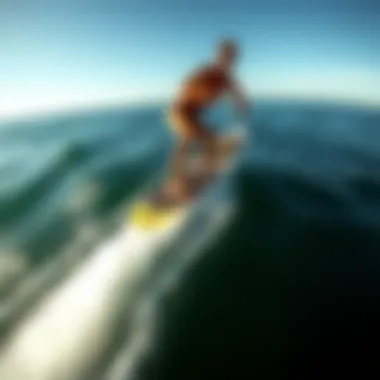

Intro
Efoil boards are creating quite the stir, bringing a blend of elegance and innovation to the water sports scene. Imagine gliding above waves with barely a splash, powered by an electric motor that elevates you off the water. This phenomenon has caught the attention of thrill-seekers and surfers alike. Understanding this new wave of efoil technology requires peeling back the layers on how these boards work, their construction, and the experience they provide.
In this guide, we’ll dive deep into all facets of efoil boards. We'll explore their functionality, share safety tips, discuss maintenance, and speculate on where this sport might be headed. The ultimate aim is to shine a light on this captivating journey and help you navigate through the efoil experience—in a way that even the seasoned kiteboarders and water sports enthusiasts can appreciate.
Understanding Efoil Boards
Efoil boards are becoming an intriguing subject in the landscape of water sports. Their rise in popularity merges traditional surfing with advanced technology, creating a novel experience for users. Understanding efoil boards is vital as it uncovers the unique features that set them apart from other watercraft, and highlights why they have captivated the interest of kiteboarders, instructors, and coaches alike.
With the thrill of gliding above the water’s surface, riders enjoy not just exhilarating speeds but also a sense of freedom that comes with this powered board sport. This new form of surfing allows enthusiasts to navigate waterways without the constant need for waves, broadening the horizons of where one can ride.
Efoil boards rely heavily on electric propulsion which facilitates a smoother ride, making them particularly accessible for riders of varying skill levels. The infusion of technology into surfing not only adds an element of excitement but also brings about new considerations for safety, maintenance, and the overall learning curve. Thus, comprehending these boards becomes crucial for any water sports aficionado looking to embrace the latest innovations.
Definition of Efoil Boards
An efoil board can be described as a surfboard equipped with an electric propulsion system that lifts the rider above the water and provides a unique riding experience. Unlike traditional surfboards, efoils feature a hydrofoil, which is an underwater wing that generates lift as water flows over it. This allows the board, and hence the rider, to rise above the water surface, leading to greater maneuverability and the ability to glide smoothly across the water.
This board usually consists of a sturdy platform known as the deck and an electric motor, which is usually mounted on a mast attached to the hydrofoil beneath the board. The motors can be powered by rechargeable lithium-ion batteries, which have improved in efficiency in recent years, allowing for longer ride times and reduced charging times. Riders control the speed and direction using a handheld remote that communicates wirelessly with the board’s motor.
Evolution and History
The journey of efoil boards began as an inspired fusion of several water sports attributes. The concept can be traced back to the development of hydrofoils in the early 20th century, which were primarily used in racing boats. Over the decades, surf culture has constantly evolved, with innovators searching for ways to push the boundaries of what is possible on water.
By the 2010s, several companies started to experiment with electric propulsion, leading to the emergence of the efoil as we know it today. The first commercially available efoil boards hit the market around 2018, marking a significant milestone in water sports innovation. Initially, these boards were priced at a premium, making them accessible mainly to enthusiasts and professionals.
As technology continues to advance, bringing costs down, efoil boards have started to attract a more diverse audience. With improved design features and battery performance, efoils have solidified their place in water sports. Today, they are used not just for leisure but also for instructional purposes, as instructors leverage their unique features to teach surfing fundamentals in new ways.
Technical Components
Understanding the technical components of efoil boards is crucial, as they directly affect performance, durability, and the overall riding experience. When we talk about these boards, we’re referring to a sophisticated combination of materials, mechanical parts, and electrical systems. Getting a grip on the elements that make up efoils can help enthusiasts appreciate their design, and it’s key to maximizing the joy they offer on the water.
Construction Materials
Composite Materials
Composite materials, often utilized in efoil boards, are composed of two or more distinct substances that work together to create a product with enhanced properties. These boards typically blend materials like fiberglass, carbon fiber, or even Kevlar to achieve a balance of lightweight yet sturdy construction. One distinct characteristic of composite materials is their impressive strength-to-weight ratio, which enables the board to not only glide smoothly but also withstand the forces of water impacts.
The lightness that these materials bring is a game changer for efoil boards. Riders can experience higher speeds and improved maneuverability while spending less energy maintaining speed. However, it’s essential to recognize that using composite materials also brings some trade-offs. For example, while carbon fiber offers incredible strength, it’s also pricey, making the overall board cost increase.
Weight Considerations
When it comes to weight considerations, they play a pivotal role in the overall performance of an efoil board. A board that is too heavy may be challenging to maneuver, while a board that is too light might lack stability in choppy waters. The right weight allows the rider to achieve effortless lift when the foil engages with the water beneath. Often, the ideal efoil board will strike a balance—providing enough heft to maintain stability while being light enough to allow for dynamic movement.
A common characteristic observed in well-balanced boards is the use of strategically placed mass distribution. This feature leads to enhanced control as the rider accelerates or changes direction. A downside can be found in the search for the lightweight design; manufacturers might sacrifice robustness, making the board more vulnerable to damage in rugged conditions.
Electric Propulsion System
The electric propulsion system serves as the heart of any efoil board, setting it apart from traditional surfing methods. This system typically consists of a motor paired with batteries and necessary wiring to control and propel the board through water.
Motor Specifications
When delving into motor specifications, it’s evident that these motors are designed specifically for water sports. They need to be both powerful and compact. Riders often benefit from high-torque motors that can provide ample thrust while ensuring minimal drag. Typically, these motors operate silently, allowing the beauty of nature to resonate without intrusive noise.
One of the key elements of the motor is its efficiency in delivering performance while conserving battery life. However, the power-to-weight ratio must be accounted for. A more powerful motor can mean a heavier board, which can conflict with other design goals. Hence, engineers focus on optimizing the motor's size and weight without compromising on performance.
Power Sources
The power sources of efoil boards primarily revolve around lithium-ion batteries, known for their high energy density and rechargeable capabilities. An inherent characteristic of these batteries is their ability to endure numerous charge cycles while maintaining performance, which is a big plus for users.
One unique feature is the varying voltage levels that power systems can offer. A board equipped with a higher-voltage battery can accelerate faster, thus enhancing ride experience. Nonetheless, with greater power comes greater responsibility; the rider must be mindful of the run time and manage battery usage to extend outings, especially on longer rides. In addition, while these batteries contribute to performance, they can add weight and require careful handling during maintenance.
"Understanding these elements makes a ride not just exhilarating but also safe and smooth."
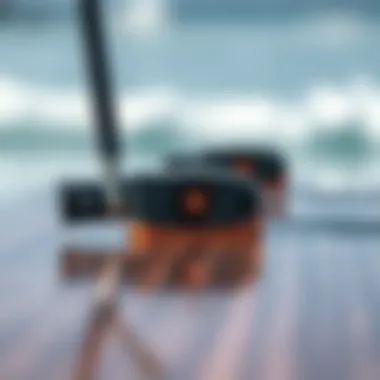
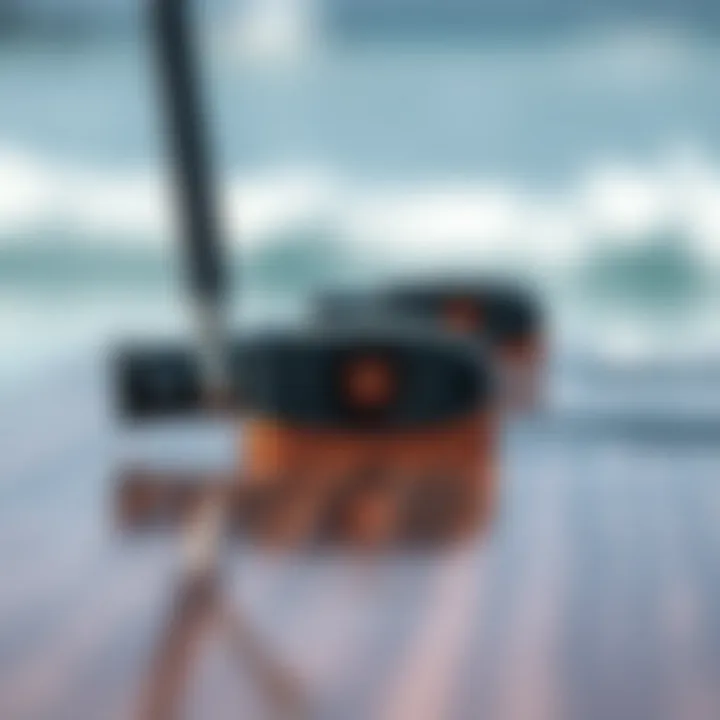
For further information on material properties, see Wikipedia on Composite Materials and Battery Technology to grab deeper insights into the technology behind these dynamic boards.
How Efoil Boards Work
Understanding how efoil boards operate is essential for grasping their appeal in the realm of modern water sports. At their core, the technology behind efoil boards taps into principles of physics that allow riders to glide above water while harnessing speed and agility. The combination of hydrodynamic science and innovative mechanical control systems distinguishes them from traditional boards, drawing a growing audience eager to grasp this cutting-edge experience.
Hydrodynamic Principles
Lift and Drag
Lift and drag are crucial components of any watercraft's dynamics, and efoil boards are no exception. Lift is the force that counters gravity, enabling the board to rise above the surface of the water. It is primarily generated by the foil's unique shape as it slices through water. On the flip side, drag is the resistance that the board or foil encounters while moving, which can impede speed if not managed effectively.
A key characteristic of lift in efoil design is its relationship to speed—the faster the water flows over the foil, the greater the lift produced. This phenomenon allows riders to experience a sense of weightlessness, which many find exhilarating. However, if not balanced properly, excess drag can result in an erratic ride, decreasing overall performance.
Lift and drag interplay reflects the beauty of efoil technology. Optimized lift helps in achieving faster speeds, while efficient designs can mitigate drag, creating a thrilling, smooth ride. One advantage of mastering this is that skilled riders can experience the board's full potential, effortlessly transitioning between speeds while performing maneuvers that are far more difficult on traditional surfboards.
Foil Design Fundamentals
The essence of any efoil board's performance lies in its foil design. The fundamental shape and orientation of the foil determine how fluid dynamics are harnessed during operation. Most often, efoils employ a hydrofoil design that resembles an airplane wing submerged underwater. This design assists in generating lift, allowing the board to glide above the water rather than remaining in contact with the surface.
One of the unique features of foil design is the aspect ratio—the ratio of the foil’s wingspan to its surface area. A higher aspect ratio typically results in increased efficiency and better lift generation, though it may compromise stability at lower speeds. Conversely, a broader foil might lend itself to increased stability, yet may not generate lift at high speeds as effectively as a high-aspect-ratio foil. This trade-off can dictate a rider's experience on the board, particularly as they become familiar with their equipment.
Understanding foil design fundamentals not only enriches one’s riding experience but also plays a pivotal role when selecting a board tailored to individual skill levels and preferences.
Operational Mechanics
Operational mechanics are what ultimately provide an efoil board its distinct edge over traditional water sports vehicles, allowing for enhanced flexibility and performance in various conditions.
Control Mechanisms
The control mechanisms integral to efoil boards enable riders to maneuver with grace and precision. These systems typically consist of a handheld remote that adjusts power to the electric motor, along with gyroscopic stability systems that help to maintain balance while riding. This interaction between rider and craft creates an intuitive experience where small adjustments can dramatically influence the ride.
Most advanced efoils use wireless communication between the remote and the board, ensuring responsive real-time controls. A key characteristic is that these mechanisms allow riders to experiment with acceleration and deceleration smoothly. Whether a novice or experienced rider, efficient control enhances the overall ride, making it essential to understand. The downside is that initial setup and calibration might require patience, especially for those unfamiliar with electric watercraft.
Speed and Agility
Another pivotal aspect is speed and agility, which influence not only how quickly a rider can traverse the water but also how effortlessly they can execute transitions and maneuvers. Efoil boards generally offer a speed capability that surpasses traditional surfboards, which can elevate the entire water sports experience.
A standout feature of efoils is their ability to accelerate rapidly while maintaining stability. Riders can adapt quickly to changing water conditions and perform tricks that can be difficult to manage on conventional boards. However, this capability invites a catch—higher speeds necessitate skill and caution. Therefore, while speed and agility represent significant advantages, they also entail risks that riders should be aware of, especially when navigating crowded waterways or adverse conditions.
"Efoil boards not only elevate your riding experience but also challenge you to push your limits and explore new techniques."
Comparative Analysis
Understanding how efoil boards stack up against both traditional surfboards and other forms of electric watercraft is fundamental for enthusiasts looking to navigate the waters of this promising sport. This section offers insights that can help in making informed choices.
Efoil Boards vs. Traditional Surfboards
Efoil boards and traditional surfboards both find their roots in the waves, yet they offer remarkably different experiences.
- Usage Style: Traditional surfboards rely exclusively on the surfer's skill and the natural wave energy. In contrast, efoil boards utilize a battery-powered propulsion system, allowing users to glide above the water, even in less-than-ideal wave conditions. The thrill of efoiling can be likened to flying over the water, a feeling absent in conventional surfing.
- Skill Development: While mastering a traditional surfboard can take years, efoil boards allow beginners to find their footing more quickly due to the support of electric propulsion. That said, handling an efoil board effectively still necessitates some surfing chops, especially when it comes to balance and movements.
- Accessibility: Efoil boards are opening watersports to a broader audience. For those who have always wanted to ride the waves but felt intimidated by traditional surfing’s physical demands, efoils offer a gateway into the sport. Experienced instructors may find that efoil boards can be more forgiving, giving them the ability to teach concepts in a more controlled manner.
- Maintenance Needs: In terms of upkeep, traditional surfboards generally require occasional waxing and repairs from dings, while efoil boards come with battery management and electric parts that might require more thorough checks by knowledgeable users. With increasing use of advanced materials, potential weight savings in efoils could also come into play regarding durability and upkeep.
Efoil Boards vs. Other Electric Watercraft
As the efoil board trend gains momentum, it’s important to evaluate how they compare with other electric watercraft, such as electric jetboards and electric surfboards.
- Design and Functionality: Efoils utilize a foil mounted below the board, enabling lift and a unique riding experience, whereas many electric jetboards typically remain submerged. This elevated position greatly enhances ride comfort and maneuverability, significantly impacting user experience.
- Performance Metrics: Efoil boards tend to offer higher speeds and longer riding times, thanks to the efficiency of their propulsion systems. Compared to traditional jetboards, efoils might provide a smoother ride with reduced drag, which translates into less energy waste.
- Portability: When considering transportation, efoil boards are often more compact compared to bulkier electric watercraft. This makes them an attractive option for those looking to take their gear on the go. At surfing hotspots or remote lakes, the ease of carrying an efoil can mean the difference between a day lost and a day worth remembering.
- Community and Experience: The efoil community continues to expand, blending a variety of users from surfing backgrounds to those who’ve recently joined the water sports fold. It's not just about the boards; it’s the shared experience that draws folks in. Engaging with others who ride efoils often adds layers of intrigue and camaraderie that can be seen in gatherings around beaches or dedicated efoil parks.
In sum, the comparative analysis of efoil boards against traditional surfboards and other electric watercraft reveals essential insights, showcasing the strengths and unique offerings of efoils in the widening realm of watersports. Each type of board brings its own set of benefits, but those examining these differences will find efoils to be a compelling option, tailored beautifully for both adventure and ease.
User Experience
The user experience when engaging with efoil boards plays a crucial role in shaping the overall enjoyment and proficiency of riders. Whether a person is a novice or seasoned practitioner, understanding the elements that influence this experience can dramatically enhance their time on the water. It’s critical to recognize how different skill levels, learning curves, and unique challenges affect riders, as these insights can guide users toward making informed choices and refining their techniques.
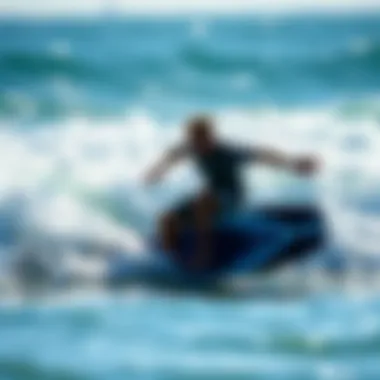
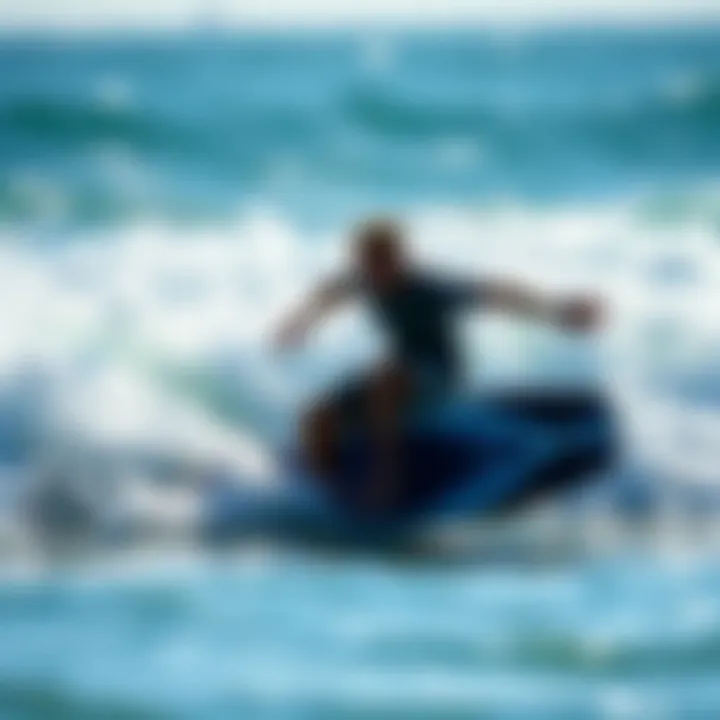
Skill Levels Required
Beginner Insights
For beginners stepping into the world of efoiling, the excitement is often matched by a multitude of challenges. One significant aspect of beginner insights is the intuitive control system found in modern efoil boards. This feature can be seen as a double-edged sword: while it simplifies the initial learning process, it may also inadvertently mask essential skills that are vital later on. New riders often favor boards equipped with larger foils, as they provide stability and lift at lower speeds, making them a popular choice.
However, beginners should note that this ease can create a false sense of security, leading them to underestimate the importance of mastering their balance and body posture. Thus, while these boards offer a forgiving platform, they should also encourage learners to hone their technique.
In short, using beginner-friendly efoil boards enables users to experience the thrill of gliding across water earlier than expected, offering a tantalizing glimpse into the efoiling possibilities.
Advanced Techniques
As riders elevate their skills, delving into advanced techniques becomes both a necessity and a thrilling pursuit. The most notable feature of these advanced techniques is dynamic maneuvering, which allows for greater control and artistic expression on the water. Riders who have mastered the fundamentals of balance and acceleration find that they can carve and jump with stunning ease, showcasing their skills.
Such techniques also involve nuances like using leaning mechanics to optimize speed and turning capabilities, contributing significantly to an exhilarating experience. However, it’s worth noting that these advanced maneuvers require a deeper understanding of hydrodynamics, making them potentially intimidating for some. The thrill of executing these moves can be incredibly rewarding, but mastering them demands dedication and practice.
Learning Curve
Initial Challenges
Every journey begins with its fair share of obstacles. The initial challenges encountered while learning to efoil often include managing balance, adapting to the unique feel of the board, and navigating wind and wave conditions. One crucial aspect of these challenges is adjusting to the electric propulsion system, which can differ vastly from traditional surfboards or kiteboarding setups.
Moreover, many beginners experience difficulty with timing their weight shifts correctly, leading to frustrating wipeouts. Nevertheless, these initial struggles play a significant role; they compel riders to develop a more profound connection with the board and understand its behavior on water. As they work through these hurdles, many riders ultimately report a sense of accomplishment when they finally find their groove.
Progression Tips
Progressing from novice to proficient rider can often seem daunting, but beneficial tips can smooth the pathway. One of the most effective strategies involves incremental learning, where riders focus on mastering one skill at a time—be it balance, acceleration, or turning. This structured approach allows users to build confidence step by step.
Additionally, riders are encouraged to invest time in observing more experienced efoilers, as learning through observation can reveal insights and techniques that aren’t always apparent through solitary practice. Furthermore, utilizing online resources, such as forums on reddit.com and instructional videos, can provide valuable perspectives that facilitate growth.
To sum it up, the user experience encompasses a range of factors that can enhance or hinder one's efoiling adventure. By understanding the skill levels required, acknowledging initial challenges, and applying effective progression tips, riders can pave their way towards mastering the art of efoiling.
Safety Considerations
When it comes to enjoying efoil boards, safety isn’t just an accessory—it's a necessity. As these boards glide over waves, their electrical components and high speeds mean that taking a few precautions can make all the difference between a thrilling adventure and a potential mishap. This section dives into essential safety gear and operational protocols that ensure efoiling remains an enjoyable pursuit for everyone involved.
Protective Gear
Helmets
One of the most vital pieces of safety gear for anyone taking to the water on an efoil board is the helmet. Helmets are designed to shield the head from impacts, which can happen unexpectedly, especially for newcomers still finding their balance. A sturdy helmet can not only protect against head injuries but also instills a level of confidence that lets the rider focus on mastering the board.
A key characteristic of efoil helmets is their lightweight construction paired with shock-absorbing materials, making them comfortable for extended wear. Many helmets also come equipped with ventilation systems to circumvent overheating on hot, sunny days. A particularly beneficial feature of these helmets is their adjustable fit, allowing for a snug and secure feel.
However, it's worth mentioning that while helmets can significantly mitigate the risk of injuries, they are not a magic bullet. Each individual should also be mindful of their surroundings and not push beyond their skill level. Helmets can be found in various designs, catering to personal style preferences, which might make wearing one more appealing.
Impact Vests
Alongside helmets, impact vests play a vital role in protecting riders from potential falls or collisions. These vests are designed to absorb energy during falls, helping to minimize the risk of injury to the torso. Many riders opt for impact vests because they offer a combination of buoyancy and protection—keeping users afloat while also cushioning any strikes.
A major selling point of impact vests is their ergonomic fit, which does not hamper movement on the board. Unlike traditional life jackets, which can feel cumbersome, impact vests allow for a full range of motion critical for maneuvering through water. Moreover, many models are made with water-repellent materials that dry quickly after use, adding a layer of convenience.
Yet, like any piece of safety gear, impact vests have their limitations. They are ideal for providing protection but do not replace the need for appropriate buoyancy aids, especially in open water settings where conditions can change rapidly.
Operational Safety Protocols
Water Conditions Assessment
Understanding the conditions of the water before setting out on an efoil board is crucial for ensuring safety. Wind speeds, wave heights, and current strength are all significant factors that can impact the ride. Before hitting the water, assessing these elements can help riders gauge whether it's a suitable day for efoiling.
A fundamental characteristic of a good water conditions assessment is that it informs users about potential hazards they may not readily see. For instance, knowing that wind speeds are higher than recommended could save a rider from fighting against the elements or losing control on turbulent waters. Riders should always check reliable weather forecasts and local advisories to stay informed.
Yet, relying solely on weather apps may not be enough. Seasoned riders suggest that taking the time to observe the water firsthand can provide invaluable insights. If the water looks choppy or the wind appears strong, sometimes it's best to wait for another day, which ultimately allows for a better, safer experience.


Emergency Procedures
In the world of efoiling, being well-prepared for emergencies is just as essential as having the right gear. Having a clear plan can mean the difference between a minor incident and a serious situation. Familiarizing oneself with emergency protocols—such as knowing how to safely retrieve oneself or others from the water—can empower riders to respond effectively if anything goes awry.
A key aspect of emergency procedures is practicing what to do in the event of a fall. Riders should know how to swim back to their boards or the shoreline and, if necessary, signal for help. It's wise to discuss potential emergency scenarios with friends or fellow riders before embarking on a trip, so everyone knows what steps to take in case of an unexpected turn of events.
One unique feature of a solid emergency plan is having a communication device at hand, whether it's a waterproof phone or a signaling whistle. This could be invaluable if riders find themselves in a situation where they cannot return to the shore due to fatigue or injury—but important to remember is that communication devices should be easily accessible and functional.
Taking the precautionary measures discussed here shouldn't be viewed as mere formalities; they are vital components of a responsible efoiling adventure. Equipped with the right knowledge and gear, riders can focus on enjoying the thrill that efoiling has to offer while minimizing risks.
Maintenance and Care
The maintenance and care of efoil boards are critical components for ensuring their longevity and functionality. As with any innovative piece of equipment, particularly those used in dynamic environments like water sports, regular upkeep ensures your efoil stays in peak condition. Proper care not only prolongs the life of the board but also enhances performance and ensures safety for the user. A little attention can go a long way in preserving the delicate balance of mechanical and electronic components that make efoils such an exhilarating experience.
Routine Maintenance Tasks
Battery Care
Taking care of the battery in an efoil board is arguably one of the most crucial maintenance tasks. It significantly influences the overall performance and lifespan of the board. A well-maintained battery ensures that you can enjoy uninterrupted riding sessions without suddenly losing power in the middle of a wave. Something that stands out in battery care is the consideration of optimal charging practices. It’s generally recommended to avoid letting the battery dip below 20% before recharging, as deep discharges can diminish battery life over time.
In addition, proper storage conditions, like keeping the battery at moderate temperatures and avoiding extreme heat, can also enhance its durability. Keeping it on a trickle charge when not in use can be beneficial, but be wary—overcharging can be just as harmful. It’s about striking that balance.
Foil Inspection
Inspecting the foil is another fundamental routine maintenance task that cannot be overlooked. The health of the foil directly affects the board's performance. Regular checks can help identify inconsistencies or damage, such as nicks or scratches, which could alter how the foil interacts with the water. An effective inspection should focus on areas where wear is most likely, particularly along the edges.
What's particularly handy is creating a checklist for inspections: ensure the connections are snug, look for any visible damage, and check for signs of corrosion. Foil maintenance requires attention to detail—small imperfections can lead to inefficiencies, which might mean a less enjoyable ride.
Storage Recommendations
Weather Considerations
When it comes to storing efoil boards, the weather plays a significant role. Storing the board in direct sunlight can cause material degradation and lead to fading colors. Similarly, exposure to moisture can invite mold or rust, particularly in the electronic components. Ideally, find a cool, dry place that’s sheltered from the elements. A dedicated storage bag or case can also serve to provide extra protection from environmental factors.
Additionally, consider the seasons—harsh winter might call for indoor storage to keep the board away from extreme cold and moisture buildup. Storage solutions that cater to varied weather conditions not only protect the board but also ensure it's ready to go the moment you are.
Long-term Care
Long-term care of your efoil board encompasses a broader strategy that goes beyond routine tasks. Setting up a regular check-up schedule, similar to that of a vehicle, can be a game changer in the world of efoiling. Think about it: just like you wouldn't drive a car without ensuring everything is in top shape, you shouldn't be riding an efoil without a glance at its core components.
The pivotal aspect of long-term care focuses on periodic deep cleans and component replacements as needed. Regular attention can help keep the board fresh and can uncover issues early on, allowing for repairs that may be less costly than waiting for more significant failures. Investing time now in preventive maintenance means saving money and ensuring a thrilling efoiling experience down the line.
"An ounce of prevention is worth a pound of cure."
The Future of Efoil Boards
As we gaze into the waters of possibility, the future of efoil boards is bright and full of promise. This section delves into key elements shaping the journey ahead, exploring technological innovations and the rising appeal of efoiling within the water sports community.
Technological Advancements
Battery Innovations
Battery technologies are the lifeblood of any electric-powered device, and efoil boards are no exception. Recent strides in lithium-ion and lithium polymer batteries yield higher energy densities, which translates into longer rides and less charging downtime. One of the standout features of these batteries is their fast-charging abilities. Riders no longer have to wait around for hours, instead enjoying quick turnarounds.
However, let’s not gloss over the drawbacks. As these batteries become more efficient, the costs also rise. Beginners may find the price tag a tough pill to swallow, which could temporarily slow adoption rates. Still, the general trend towards lighter, more powerful batteries marks a significant leap for efoil enthusiasts as they look to enhance their experiences on the water.
Improved Design Features
With the promise of innovation, designers are continually blending form and function in efoil boards. One key aspect of improved design features is the emphasis on user-friendly interfaces. Many boards now come with integrated displays that provide real-time feedback on speed, battery life, and system health, allowing riders to focus less on guesswork and more on their ride.
Additionally, materials used in construction are evolving. The shift to carbon fiber makes boards not just lighter but more durable as well. While there's a steep learning curve with navigating these new designs, the result is an exhilarating ride that’s hard to compare with older models. The only downside here? Increased costs related to premium materials. Yet, again, the benefits largely outweigh the negatives, particularly for serious riders looking to stake their claim in the outdoor arena.
Growing Popularity in Water Sports
The essence of efoil boards has captured the imagination of sports aficionados everywhere. From adrenaline-seeking individuals to families seeking fun in the sun, their appeal is expanding. Every year, more and more events celebrate this pioneering sport, and communities are rallying around local efoil meet-ups and competitions.
Efoiling is particularly a hit with younger demographics, fueling local shops and rental businesses to jump on the trend. They are finding that families are more inclined to try this new excitement rather than traditional sports like surfing or kayaking. The ease of access and immediate thrill provides just the right blend of adventure whilst accommodating various skill levels.
The rise in popularity is not merely a fad; it’s an evolution of water sports that taps into the public’s desire for innovation and excitement.
Furthermore, as manufacturers continue to make strides in accessibility and safety, we can only expect the popularity wave to keep rolling in. Efoil boards might just be the ticket to the forefront of aquatic adventure, combining technology and thrill in ways previously unimagined.















